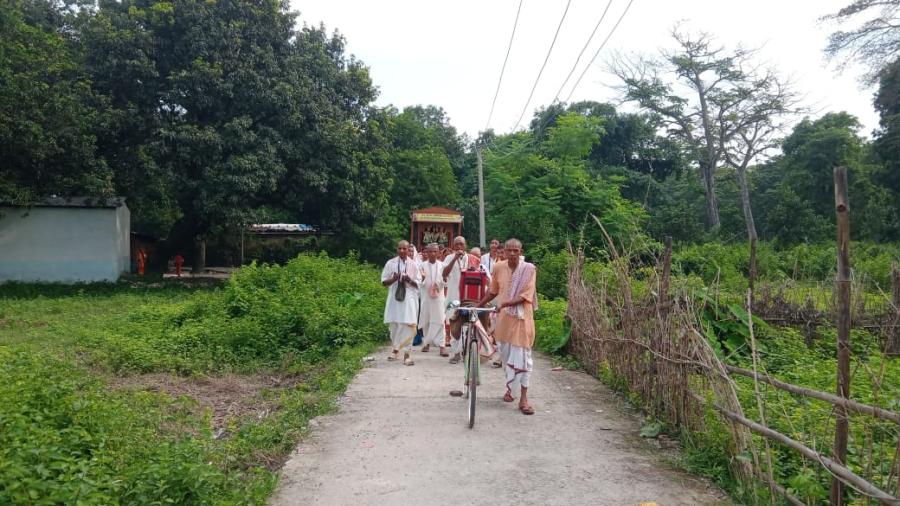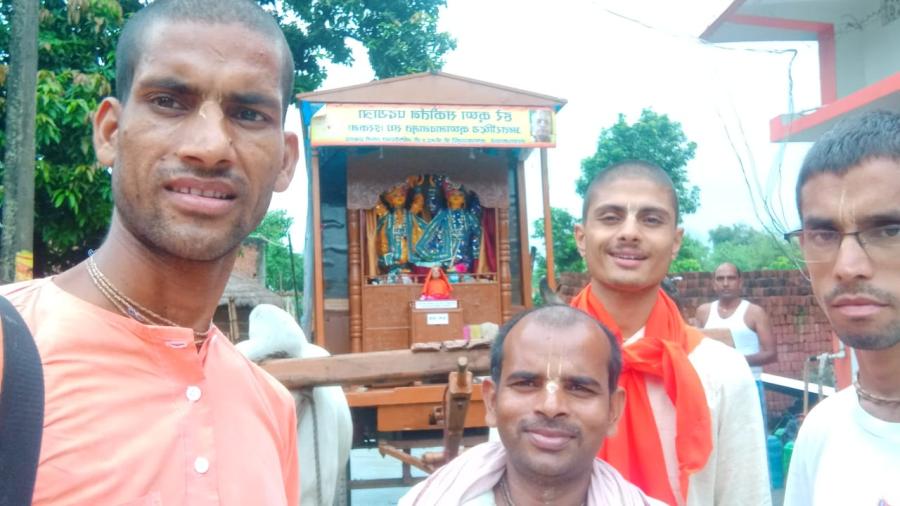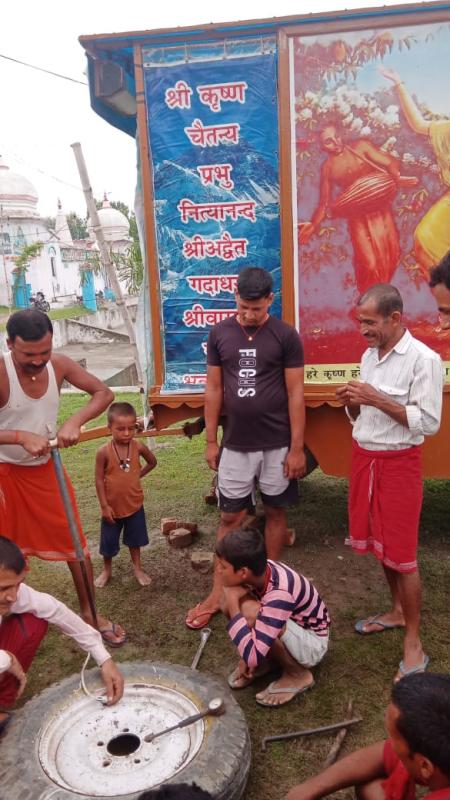By Dayal Gopal dasa (Nepal Padayatra leader)
Following the installation of Sri Sri Nitai-Gaurasundar in our chariot at Laxmipur on Padmini Ekadashi 2023 the Nepal padayatris walked westward, eventually entering Bihar’s West Champaran district where Mahatma Ghandhi started India’s first satyagraha (non-violent resistance) movement.
We initially made our way to the town of Narkatiaganj followed by the much larger Ramnagar and from there to Bhairoganj village and then Bagaha, a market town on the banks of the Gandaki River, the river that gives us shaligram-shilas.
Leaving Bagaha we walked north in close proximity to the Gandaki for about 40km, traversing jungle for more than half that distance, to reach the Triveni Dham, the confluence of the Sona, Tamasa and Gandaki rivers, and nearby Valmikinagar where the author of the Ramayana is said to have spent several years. It is a very holy place. On the way we crossed several villages, distributing books every day and having katha and kirtan and prasadam distribution every evening (attempting to cook halva prasadam but sometimes resorting to fruit). It was a quite wonderful experience.
At Valmikinagar we stayed for two days at a small ISKCON centre, the devotees there having been connected to ISKCON in Delhi for many years. They are village people who happen to go to cities for work, later returning to their homes. In Delhi they became devotees and when they came back, they opened this ISKCON centre. There are about fifteen initiated devotees, mainly disciples of Gopal Krishna Maharaja while others are disciples of Radha Govind Maharaja.
When we were walking to Valmikinagar one of the centre devotees happened to meet us and he informed the others that padayatra was coming their way. They were very happy to have the padayatris at their village and welcomed us with enthusiasm and love. We stayed at their centre for two days and on the second day all of them joined us in nagar sankirtan, prasadam distribution and kirtan. Although they were aged devotees, they did a nice kirtan.
The enforced diversion through India brought us to where we would have been if we had remained on our planned itinerary: Valmiki ashrama where the sage composed the Ramayana, located in Chitwan National Park in western Nepal across the Gandaki barrage.
The detour gave insight into contrasts between India and Nepal. For example, in Bihar we observed that the temple pujaris generally are not conducting marriages openly, whereas in Nepal there are places for marriage in almost all the temples. Young people come and do all types of nonsense, so it is very difficult to preserve one’s consciousness in such an environment. In Bihar of course, as is the king so are the subjects, so the political situation also matters. At least people there are cooperative. They provide some type of help and don’t disturb, which is not found so much in Nepal.
Hare Krishna.
 Assembled public
Assembled public 








